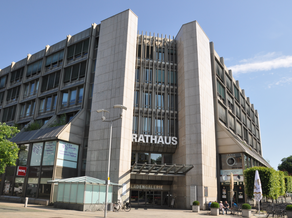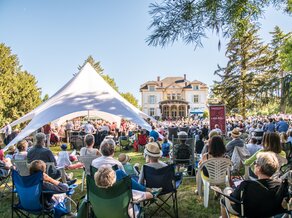Gothic House Museum
The Gothic House is a hunting lodge built in 1823 by order of Landgravine Elizabeth for her husband, Landgrave Friedrich VI Joseph, on the Great Fir Forest. After the landgrave's death in 1829, it was never able to take up its function and from then on served a wide variety of purposes. Its architecture was adapted several times to changing uses until it was completely destroyed after a fire inside. After an initial renovation in the 1980s, the exterior was largely restored to its original form. Inside, the fire had destroyed everything. A multi-storey concrete and brick building replaced the former single-storey premises, which were divided into many separate rooms.
in 1985, the Municipal History Museum, founded in 1916, moved into the building. Its presentations focused on the collections on the city and regional history of Hesse-Homburg as well as exhibits on cultural and art history. Special areas included a coin cabinet, the "Marienbader Stube" and the so-called "Hat Museum", all of which were created after 1945.
in 2020, the Municipal History Museum in the Gothic House was closed and renovations began again. It was equipped with an additional staircase, brought up to the latest technical standards and made climate-neutral.
During the renovation, 40,000 objects from the collection remained temporarily accessible to interested parties at all times in the "Schaudepot im Horex Museum". Until then, the objects from our collection relating to industrial history, in particular the history of mobility, were exhibited in the Horex Museum, which opened in 2012.
The renovation of the Gothic House is coming to an end. the museum will reopen in 2025. Its façade is in the historic Tudor Gothic style, unique on the European mainland, whose "Gothic houses" in English landscape gardens (see Pushkin, Pulawy or the Dessau-Wörlitz Garden Kingdom) quote German Gothic architecture, sometimes combined with other styles.
This means that the façade design of our Gothic House and the pathways once again correspond to the original plans of Landgravine Elizabeth. Its interior remains a functional building whose state-of-the-art museum technology will help to preserve the precious and often very fragile objects, made of a wide variety of materials, for future generations.
From now on, all areas of the collection will be exhibited in regularly changing presentation formats in the Gothic House. Special exhibitions will explore the individual areas of the collection in greater depth. The museum's offerings will be complemented by a museum café.




